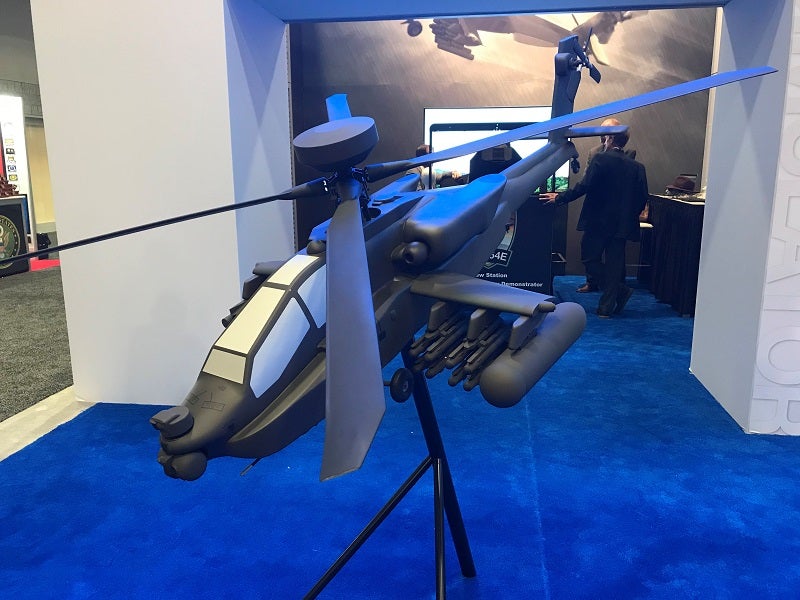
(Correction: This article has been updated to correct the name of the Modernised Apache concept)
US defence prime Boeing showcased its next-generation Modernised Apache concept model during the AUSA 2022 event in Washington, DC, as the company continues the development path of a platform that first entered military service 36 years ago.
The concept would feature the Improved Turbine Engine Program (ITEP) engine being developed by the US Army for aviation assets, providing an increase in power generation and output, allowing for improved loadouts for emerging weapons sets and sensors.
In 2019 General Electric‘s aviation subsidiary won a potential $517.4m engineering and manufacturing development contract to provide a new turbine engine for the US Army’s Apache and Black Hawk helicopters.
Providing an update into its range of fixed and rotary-wing wing programmes on 10 October, Boeing officials said that the Apache would be the US Army’s “principle attack helicopter” over the next 25-30 years, with the most recent ‘E’ variant numbering 650 units manufactured to date. Around 1,260 Apache models of all variants are operational around the world.
The Apache concept is Boeing’s step towards seeing what sort of capabilities the variant beyond the E model could feature, which would also seek to take advantage of the so-called Modular Open Systems Approach to enable rapid upgrades to platform and sub systems during service.
Boeing officials told Army Technology that the Apache concept would be envisaged to be networked through the Link 16 system, a NATO standard. In early October, US defence satellite communications company Viasat sold its Link 16 tactical data link business for L3Harris Technologies for $1.96bn.
Apache export successes
In September, Poland announced plans to acquire 96 AH-64E Apache attack helicopters as part of continued efforts to modernise its armed forces. The move is part of the country’s Kruk programme to update its rotary attack capabilities.
The move was disclosed by Polish Deputy Prime Minister and Minister of National Defence Mariusz Błaszczak during a bilateral meeting with US Defence Secretary Lloyd J Austin. In a statement, Boeing said that it was “honoured” to be selected and had established “significant cooperative partnerships” across Polish government and industry.
Speaking during the 10 October briefing, Boeing officials said working with local defence provider PGZ would be “critical” for any Apache delivery.
Meanwhile, Egypt’s acquisition of 43 AH-64E’s will see between 21-22 helicopters delivered under the first tranche of platforms. The US Defence Security Cooperation Agency announced in 2020 that the US State Department had approved the possible Foreign Military Sale in a deal worth up to $2.3bn.
In May this year Australia also announced plans to acquire 29 AH-64E’s to replace their existing Eurocopter (now Airbus Helicopters) Tiger platforms, in a deal worth $3.83bn.







